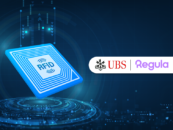By now, most of us are tired of reading about how many industries have been wiped out or troubled by the pandemic.
However, some sectors have since rebounded and are even displaying growth. In Fintech, 2021 was a record year for investments – 132 billion dollars across the board, according to marketing analytics firm CB Insights. With the rising tide of digital services, these investments make Fintech a formidable growth industry.
To learn about how FinTech is developing in Latvia and how a FinTech player can efficiently launch operations and carve out a market segment, we talked to Staņislavs Siņakovičs, Head of the Sales and Regional Development Department at LPB Bank.
Fintech in Latvia: what’s new?
Like in any other country, the FinTech sector in Latvia, has made a lot of news – some highly promising, some less so. In 2018, Latvia was on the verge of being greylisted by Moneyval. This could have resulted in a lowering of the entire country’s financial rating, but thanks to proactive efforts by the Latvian state authorities, Latvia dodged the greylist. However, it caused a decrease in the financial prestige it had once enjoyed.

Staņislavs Siņakovičs
“There has been good news, too. In a relatively short period of time, Latvia was able to turn its entire financial sector around and meet stringent AML requirements. If anyone still sees our country as an unreliable regional financial centre, the only explanation is an awareness gap. We, as a Bank, are actively involved in industry events, including Europe’s financial giant, the Money20/20 expo. We cooperate with the FCMC and with European partners to boost Latvia’s financial and technological reputation on the international stage,”
remarks Siņakovičs, a Fintech cooperation executive well-versed in the situation in the industry.
He adds that Latvia’s neighbors, Lithuania and Estonia, provide substantial state support for demonstrating and promoting their respective Fintech sectors globally. This support is both systematic and centralized. For many years, Lithuania has been a global leader in the number of financial services licenses issued – these are required for the operation of credit institutions, payment institutions (PIs), and electronic money institutions (EMIs).
Although Latvian Fintech cannot yet boast about being a top performer or enjoy significant support from the national government, Siņakovičs believes that the industry is rich in technical awareness, knowledge and experience and can deliver financial technology services at the highest level.
“In a certain sense, the devastating loss of financial reputation positively promoted regulatory improvements. Latvia now sets an example with its anti-corruption and compliance regulations and market best practices in internal controls. This makes Latvian financial service suppliers to be great partners to companies and investors worldwide. After noticing market interest, we have been developing a Banking as a Service (BaaS) concept, which is now our strategic growth priority alongside e-commerce solutions. Although a wide range of financial services is available in Latvia, LPB Bank is currently the only bank to provide a full-range BaaS offering,”
Staņislavs Siņakovičs emphasizes.
How is LPB Bank helping Fintech players launch operations on the market quickly?
The last thing any business wants is to waste its money, and time delays can often result in the companies losing an essential part of their initial investment or requiring more funding than planned. With LPB Bank, Fintech companies and start-ups can roll out branded products to their end-users in record time.
“An entrepreneur always has a choice – to build an in-house infrastructure from scratch or rely on the existing ready-to-launch solutions. Both options have their strengths and weaknesses, and the challenge is to satisfy a company’s business strategy, experience, and scale of operations. Business owners and executives may understand that having a dedicated infrastructure brings independence, freedom and flexibility – but it will take 1-2 years and at least as many million euros to implement. An entrepreneur relying on already available solutions can spend less and plan to enter the market sooner. So, we have developed a comprehensive infrastructure for non-banking financial companies. Those that choose our BaaS solution will not need to integrate dozens of fragmented products and services or evaluate the available vendors for each. We can guarantee quicker, less-expensive market entry to PIs and EMIs operating under their financial license. The time to market can be as short as a few months,”
Siņakovičs explains the advantages of LPB Bank offer.
What services has LPB Bank included in its BaaS solution?
With Banking as a Service, LPB Bank provides all the essentials for payment companies (of the PI, EMI or PSP variety) to start serving their customers as soon as possible. The Bank supports safeguarding accounts, Visa, Mastercard and Apple Pay acquiring services, addressable BIC connection for SEPA, SEPA Instant and TARGET2, virtual IBANs, and will soon support BIN sponsorship as well. To connect to LPB Bank payment infrastructure and use these services, a payment company accesses the Bank’s API for quick and secure integration.
Of course, this isn’t the final step in establishing cooperation. For onboarding, a Fintech entity must undergo an enhanced due diligence procedure.
“The technical side is the easy part. The longest and most labor-intensive part of the process is so-called onboarding. This is where a company presents its business model to us, talks about its clients, where they live and what they do, what the expected average value per payment is, where the company sees its risks, and so on. We also investigate the company’s AML and other procedures, followed by a live video demonstration. This is where the potential client presents its customer lifecycle “live”, from registration in their payment system to sending a payment. The purpose of such an in-depth analysis is to verify that a payment institution did not stop drafting appropriate documentation but does everything it says and can implement its business model effectively. At that point, we will be able to connect the client to our infrastructure,”
says Siņakovičs on establishing cooperation with a client.
LPB Bank verifies whether a potential client’s business model is viable with this onboarding process. With the expertise it has gathered so far, the Bank can offer solutions and recommendations for developing a business efficiently.
“An essential service with BaaS is the safeguarding account. Regulators in most countries require customer accounts to be booked separately from the company’s funds, and a payment institution cannot to receive a financial license without having safeguarding accounts. Another significant aspect of accounts is addressable BIC within the Single Euro Payment Area (SEPA). It connects a payment institution to international payment systems and lets it execute its customer’s payments via a unique BIC of its own as well as to assign unique IBANs to its customers.
In spring 2022, our clients received access to other essential service connections to SEPA Instant and TARGET2. Instant payments mean that financial institutions remit transfers within mere seconds. The customers of a payment entity can make instant payments between accounts held with banks that are members of European instant payment systems.
Soon, we will launch virtual IBANs – a subtype of regular bank account numbers. The difference is that a virtual IBAN is a unique allocated reference to the central master account. A virtual IBAN will be applicable to companies that receive payments for various services and require additional details (agreement number, month etc.).
Payment institutions’ marketing teams can use BIN sponsorship for brand recognition. LPB Bank will soon finalise the formation and launch our processing center, expanding our capacity for payment card processing. We expect to roll out BIN sponsorship in the first quarter of next year. With access to this service, our clients will be able to issue both virtual and plastic cards under their brands, connected to a card processing solution. They will not need to contact Visa or Mastercard directly: we are already a member of these payment systems and can connect our clients as an intermediary. It saves clients both time and money.
Various service providers have narrower specializations regarding card issues, a range of available payment currencies, etc. If a payment institution becomes a client of several providers, it will pay thousands of euros to connect and monthly subscription fees to each. A broadcustomer base is necessary to recoup such expenses. It also takes resources to support the complicated infrastructure with multiple integrations. Large companies can afford to go this way, but we recommend BaaS to start-ups and small and medium enterprises. The one-time integration fee to a single service provider is much lower, and maintaining the payment infrastructure will require fewer human and financial resources,”
Staņislavs Siņakovičs explains.
For advice on how to use BaaS, please fill out the feedback form on LPB Bank website or write an e-mail to baas@lpb.lv.






